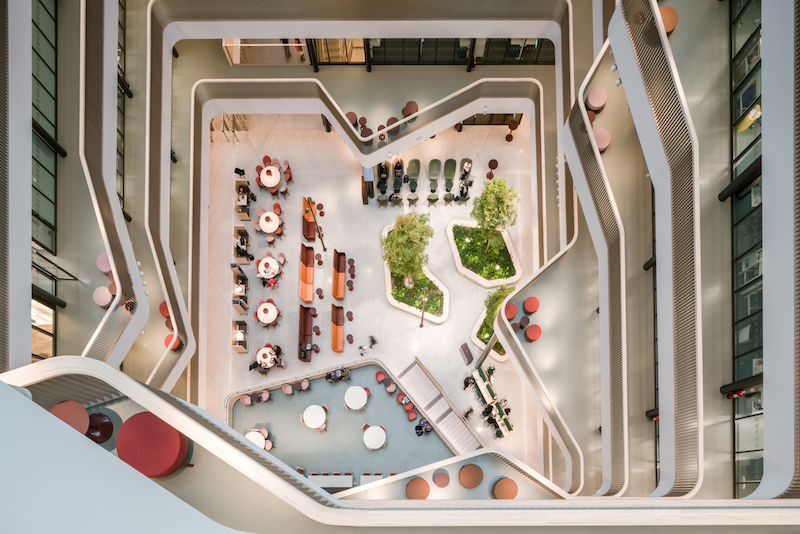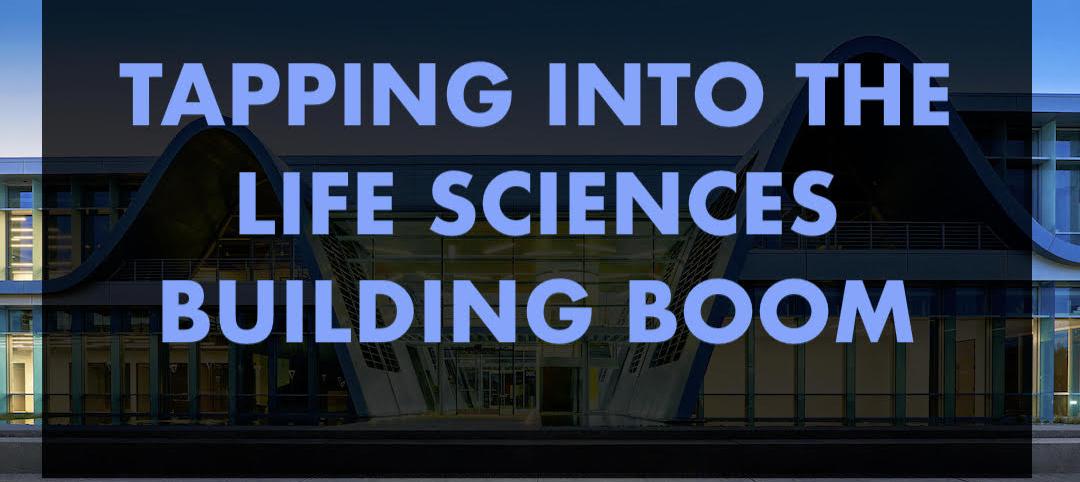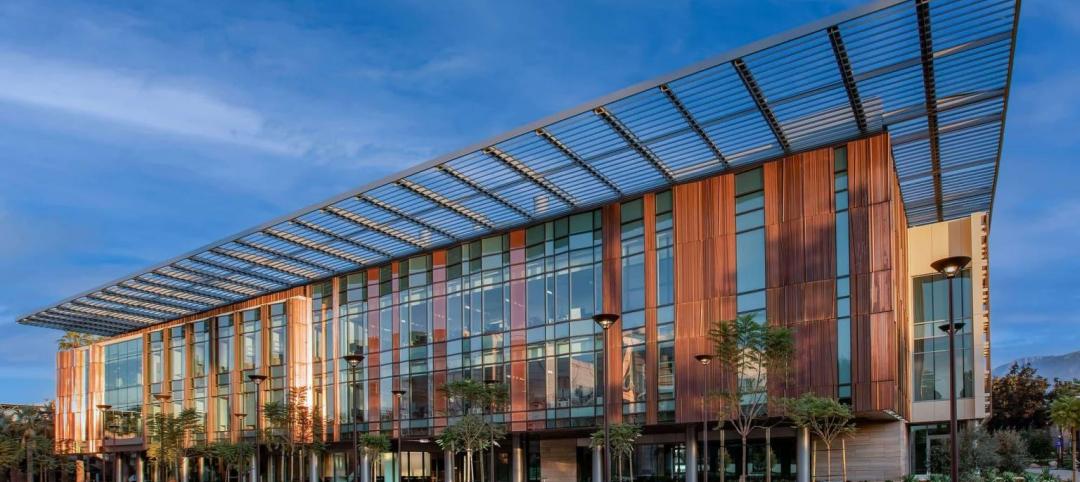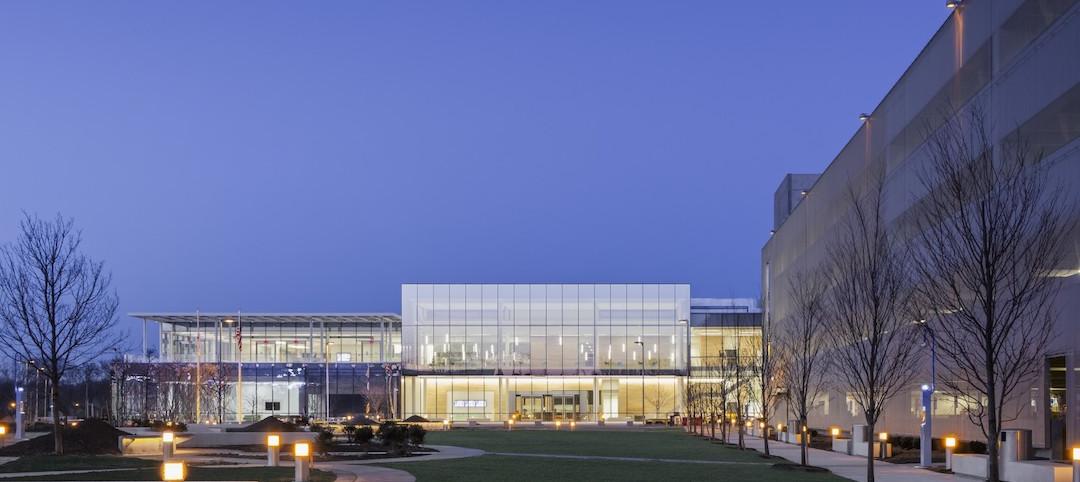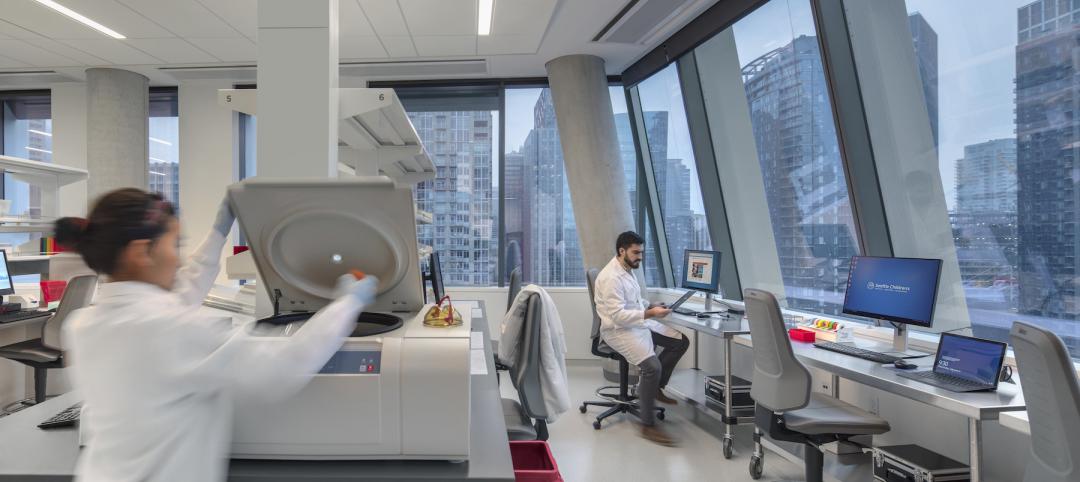Biomedicum, the new laboratory building at the Karolinska Institute in Stockholm, unifies the institute’s research environments under one roof.
The nearly 700,000-sf, 11-story facility will feature flexible laboratory and office space meant to be a catalyst for collaboration between the various research and study environments. It comprises four connected buildings with laboratories built around an eight-story high atrium wrapped in a transparent double-shell façade.
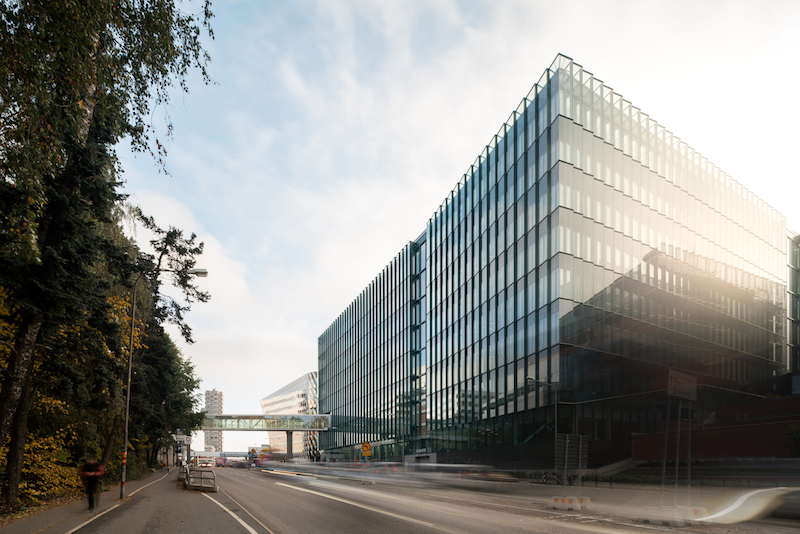 Photo: Mark Hadden.
Photo: Mark Hadden.
The building, located within the campus park, also brings the park inside its walls with a glass-covered green atrium. The atrium roof is a suspended ceiling with large dome-shaped lanterns that let in daylight. Above is a fully glazed roof that is easy to maintain and can be reached from a suspended ceiling.
See Also: Former grocery store becomes a cancer care center in New Jersey
The transparent ground floor offers access to the atrium, a cafe, conference rooms, and a public exhibition space. The ground floor also forms new connections through the park to open up the Karolinska Institute towards both the city and the planned university hospital.
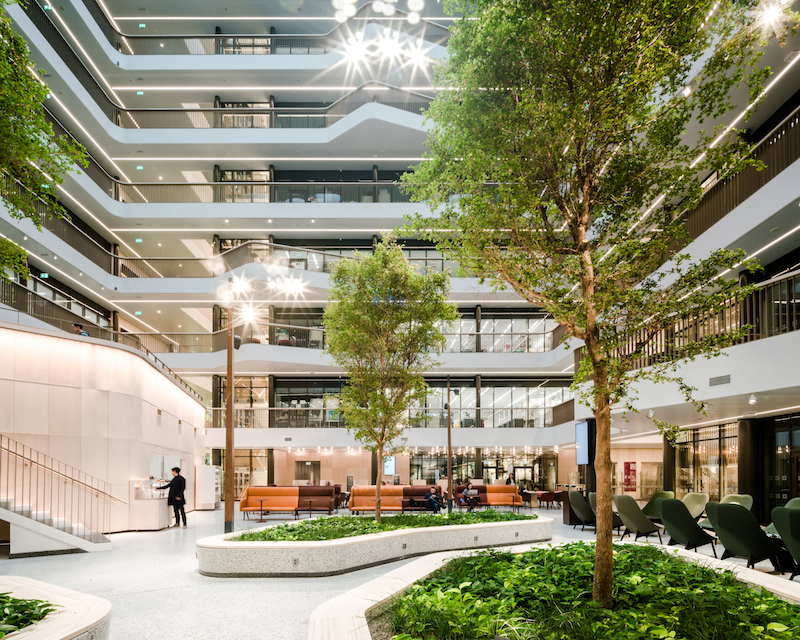 Photo: Mark Hadden.
Photo: Mark Hadden.
Biomedicum accommodates 1,600 researchers and staff and house the following departments:
– The Department of Cell and Molecular Biology
– The Department of Physiology and Pharmacology
– The Department of Microbiology, Tumor and Cell Biology
– The Department of Medical Biochemistry and Biophysics
– The Department of Neuroscience
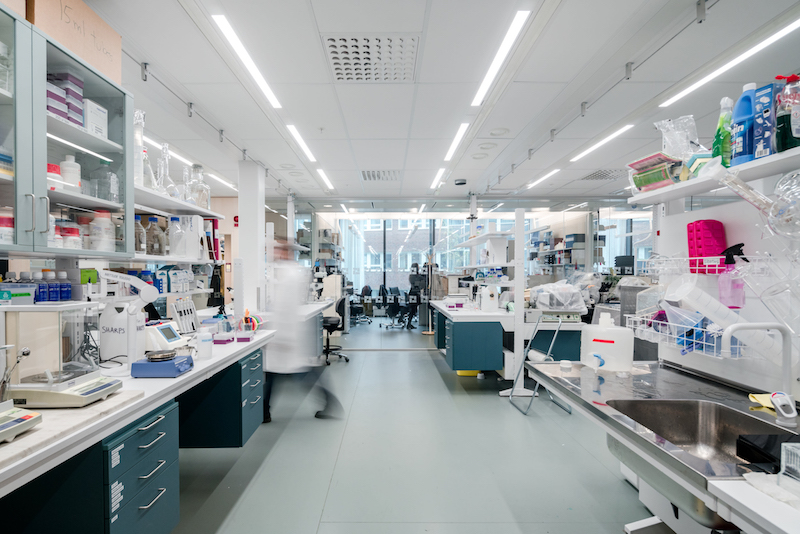 Photo: Mark Hadden.
Photo: Mark Hadden.
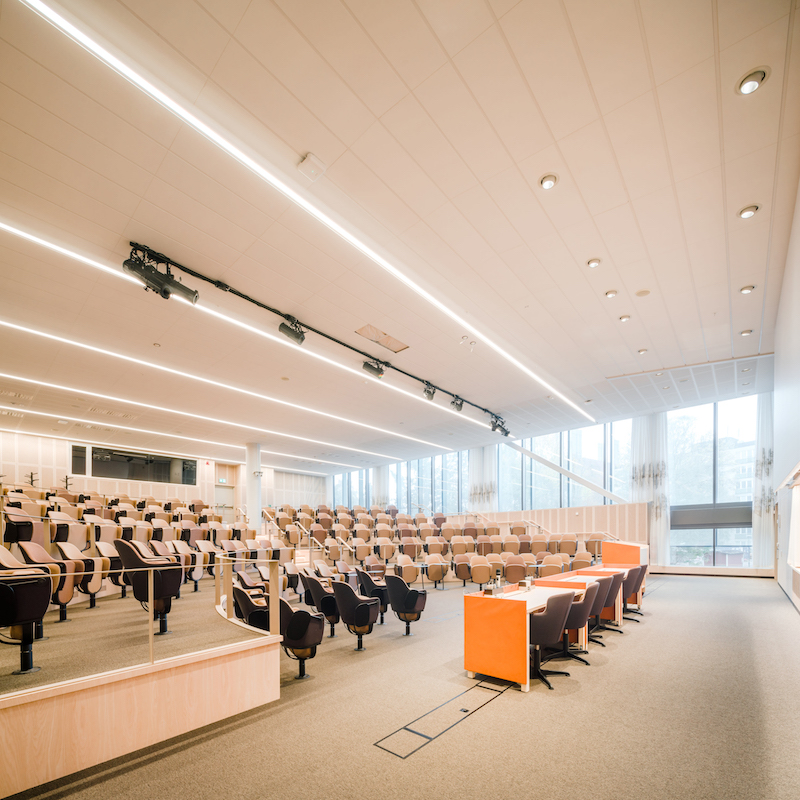 Photo: Mark Hadden.
Photo: Mark Hadden.
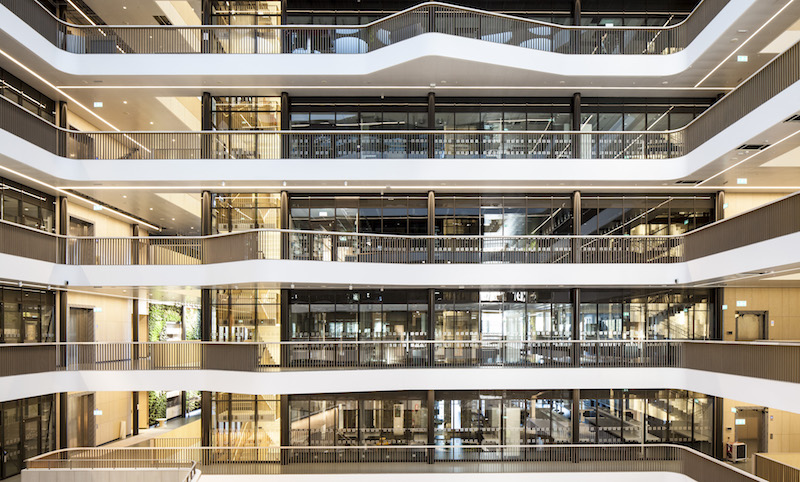 Photo: Nikolaj Jakobsen.
Photo: Nikolaj Jakobsen.
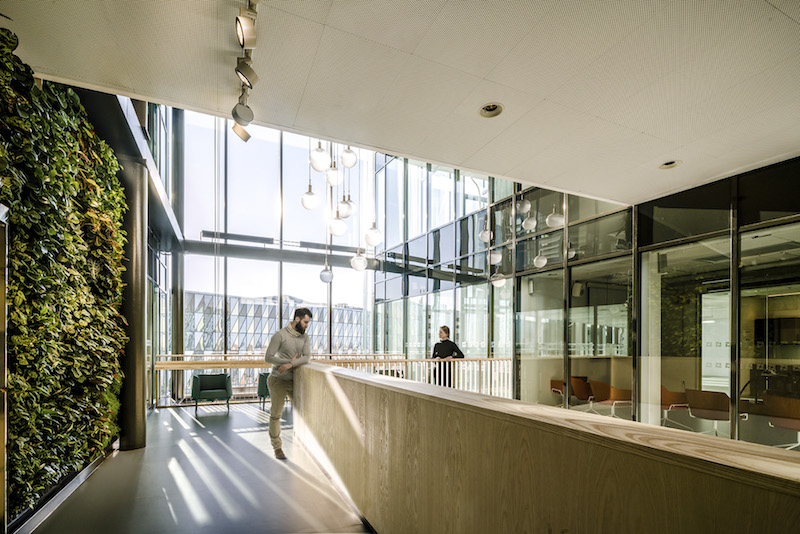 Photo: Mark Hadden.
Photo: Mark Hadden.
Related Stories
University Buildings | Jan 11, 2022
Designing for health sciences education: supporting student well-being
While student and faculty health and well-being should be a top priority in all spaces within educational facilities, this article will highlight some key considerations.
Giants 400 | Dec 31, 2021
2021 Science and Technology Sector Giants: Top architecture, engineering, and construction firms in the U.S. S+T facilities sector
HDR, CRB, Jacobs, Skanska USA, and Whiting-Turner Contracting Co. top the rankings of the nation's largest science and technology (S+T) sector architecture, engineering, and construction firms, as reported in the 2021 Giants 400 Report.
Laboratories | Nov 18, 2021
Tapping into the life sciences building boom
Paul Ferro of Form4 Architecture discusses how developers are pivoting to the life sciences sector, and what that means for construction and adaptive reuse.
2021 Building Team Awards | Nov 17, 2021
Caltech's new neuroscience building unites scientists, engineers to master the human brain
The Tianqiao and Chrissy Chen Institute for Neuroscience at the California Institute of Technology in Pasadena wins a Gold Award in BD+C's 2021 Building Team Awards.
Laboratories | Nov 17, 2021
New report finds a biopharma industry being reshaped by disruption
Industry respondents to CRB’s survey weigh in on project delivery, digitization, and off-site manufacturing for life sciences construction.
Laboratories | Oct 14, 2021
‘Next-generation’ Quest Diagnostics lab unveiled in New Jersey
Mark Cavagnero Associates designed the project.
Laboratories | Aug 31, 2021
Pandemic puts science and technology facilities at center stage
Expanding demand for labs and life science space is spurring new construction and improvements in existing buildings.
Giants 400 | Aug 30, 2021
2021 Giants 400 Report: Ranking the largest architecture, engineering, and construction firms in the U.S.
The 2021 Giants 400 Report includes more than 130 rankings across 25 building sectors and specialty categories.
Laboratories | Aug 30, 2021
Science in the sky: Designing high-rise research labs
Recognizing the inherent socioeconomic and environmental benefits of high-density design, research corporations have boldly embraced high-rise research labs.
Laboratories | Aug 25, 2021
Lab design strategies for renovations and adaptive reuse
Lab design experts in HOK’s Science + Technology group outline the challenges organizations must understand before renovating a lab or converting an existing building into research space.


